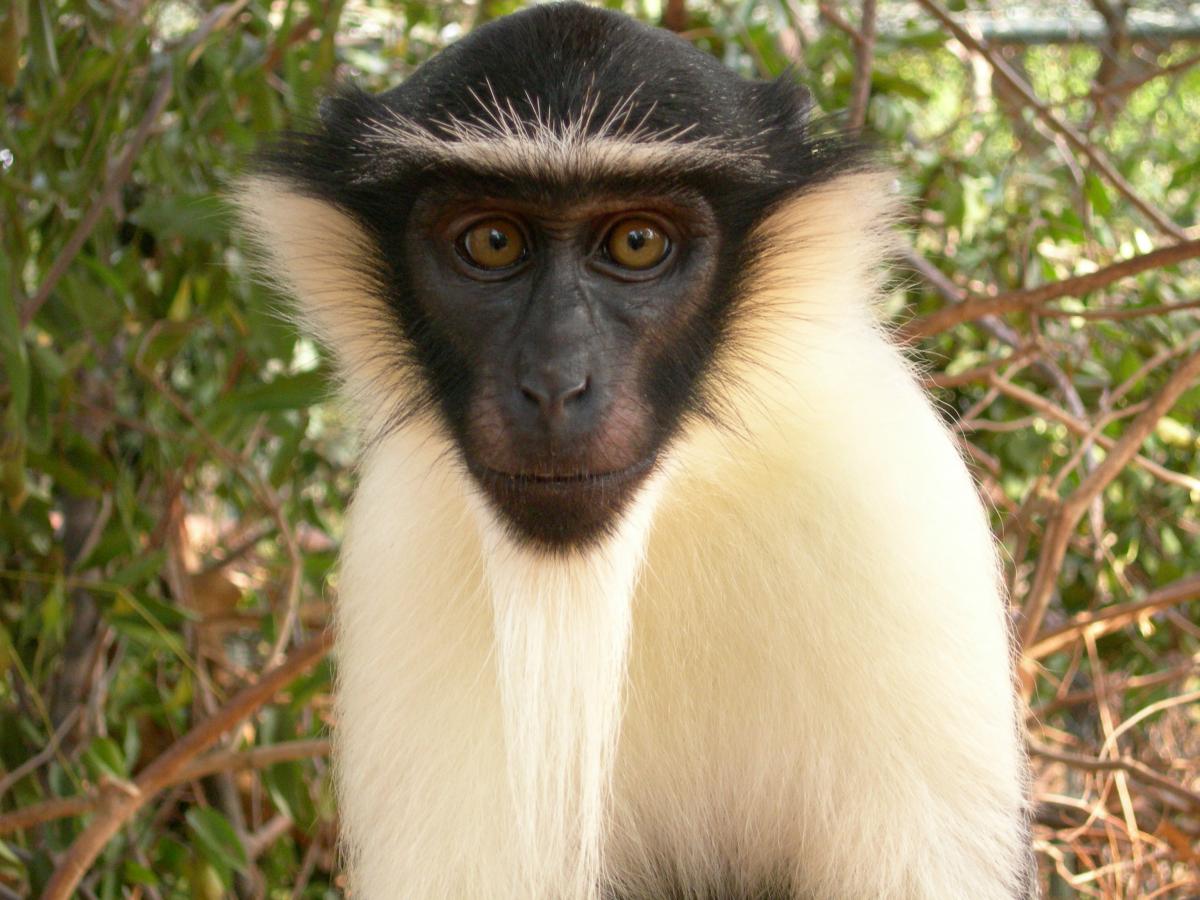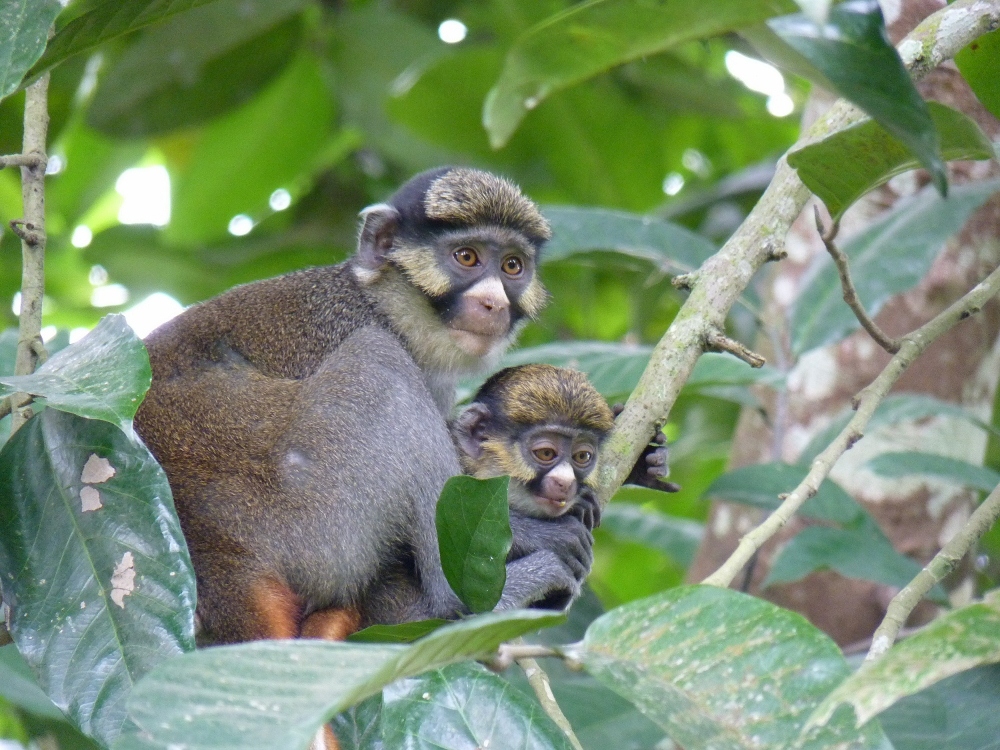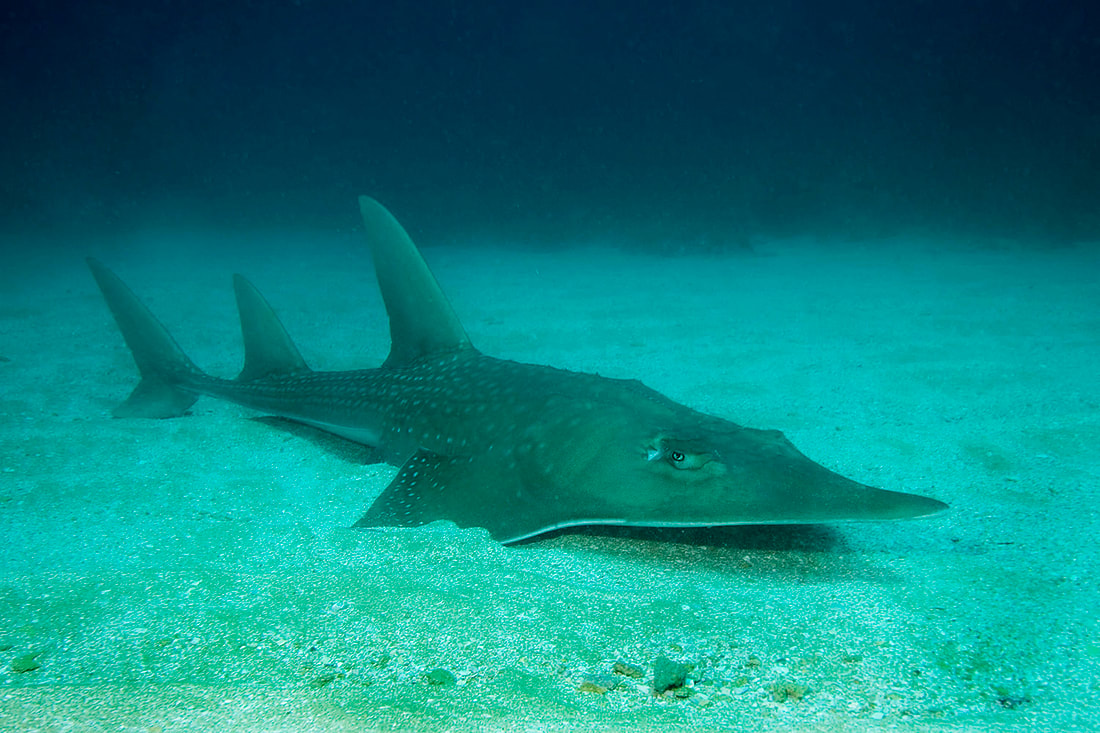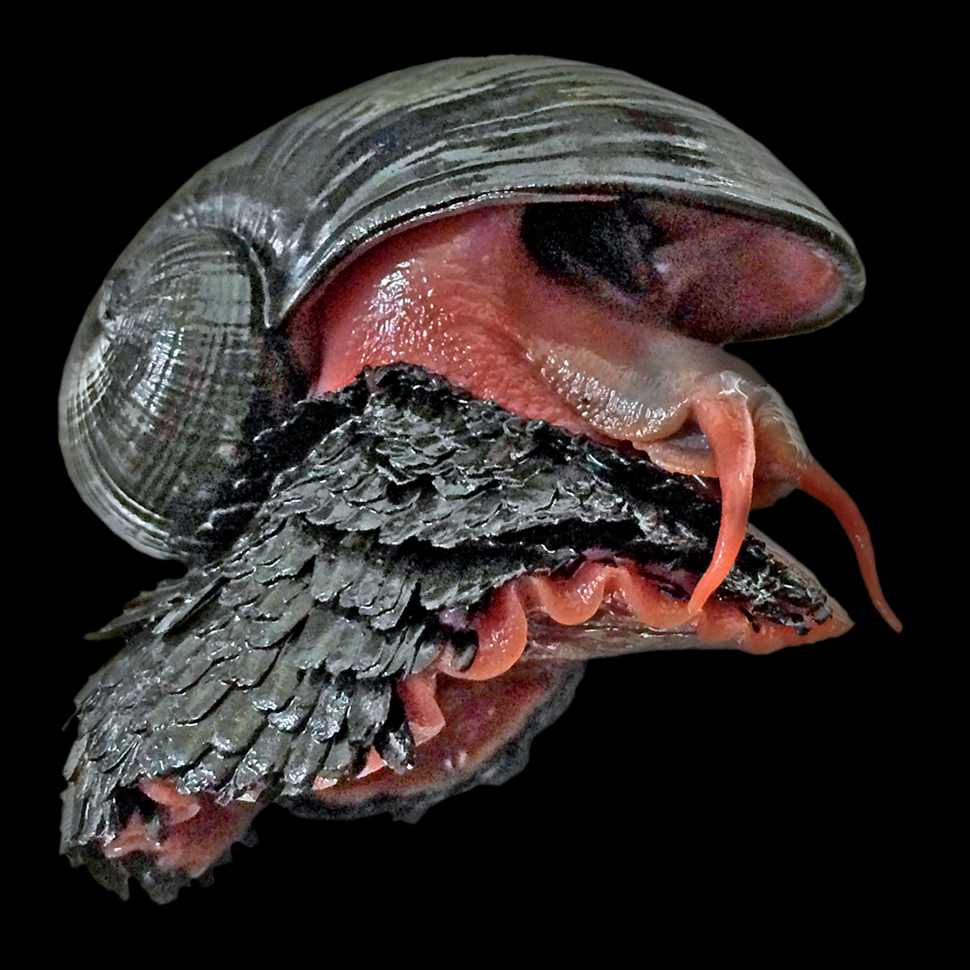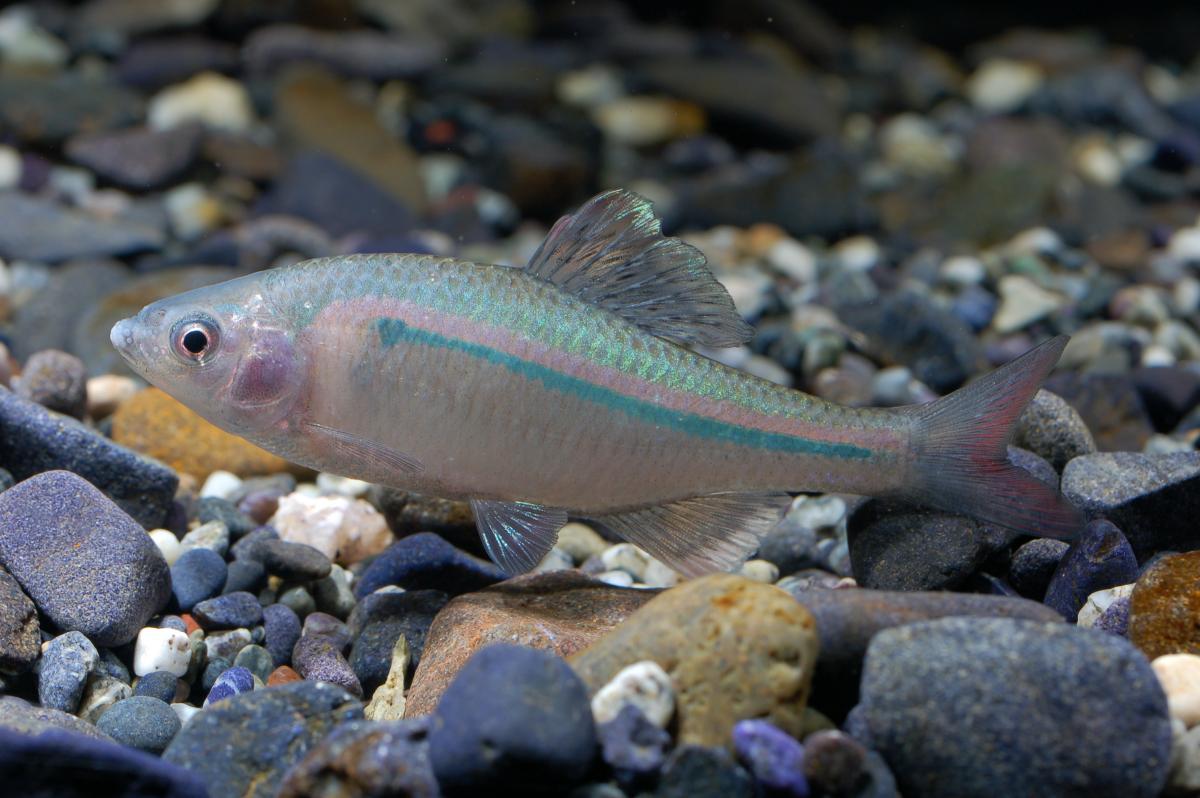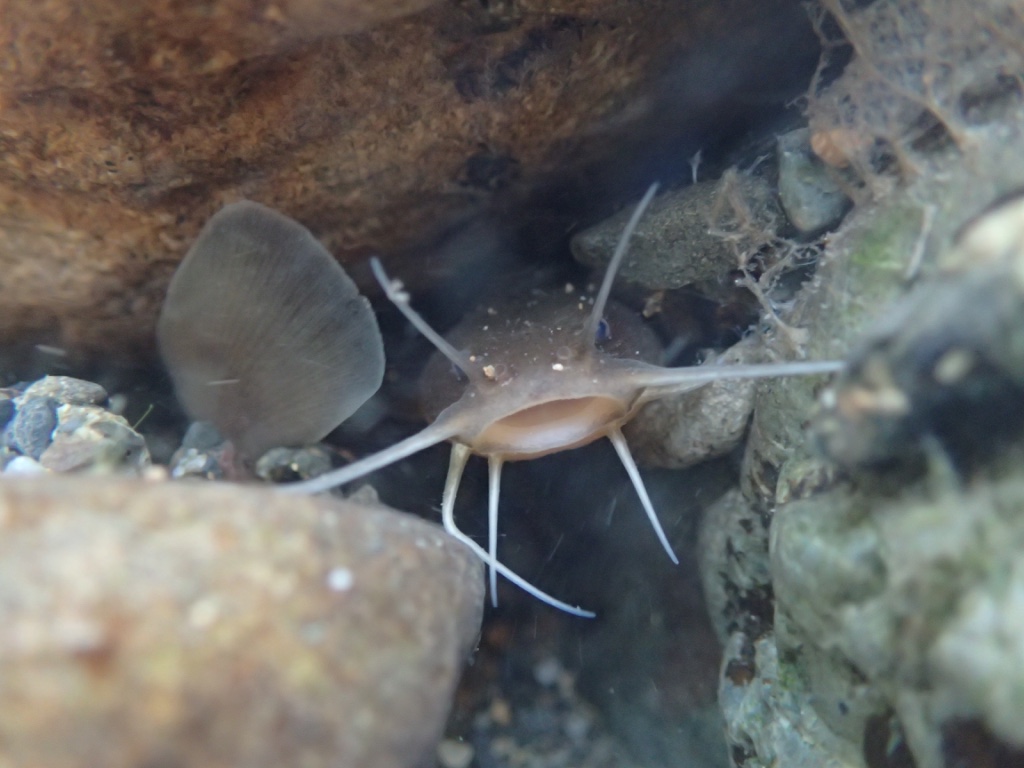Unsustainable fishing and hunting for bushmeat driving iconic species to extinction – IUCN Red List
Gland, Switzerland, 18 July 2019 (IUCN) – Overfishing has pushed two families of rays to the brink of extinction, while hunting for bushmeat and habitat loss have led to the decline of seven primate species, according to the latest update of The IUCN Red List of Threatened Species.
The update also reveals further evidence of the perilous state of freshwater fishes globally. This is shown by high numbers of species threatened by the loss of free flowing rivers, habitat degradation, pollution and invasive species in Japan and Mexico.
The IUCN Red List has broken through the 100,000 species barrier; it now includes assessments for 105,732 species, of which 28,338 species are threatened with extinction.
“With more than 100,000 species now assessed for the IUCN Red List, this update clearly shows how much humans around the world are overexploiting wildlife,” said IUCN Acting Director General, Dr Grethel Aguilar. “We must wake up to the fact that conserving nature’s diversity is in our interest, and is absolutely fundamental to achieving the Sustainable Development Goals. States, businesses and civil society must urgently act to halt the overexploitation of nature, and must respect and support local communities and Indigenous Peoples in strengthening sustainable livelihoods.”
“This Red List update confirms the findings of the recent IPBES Global Biodiversity Assessment: nature is declining at rates unprecedented in human history,” said Jane Smart, Global Director of the IUCN Biodiversity Conservation Group. “Both national and international trade are driving the decline of species in the oceans, in freshwater and on land. Decisive action is needed at scale to halt this decline; the timing of this assessment is critical as governments are starting to negotiate a new global biodiversity framework for such action.”
Rhino Rays on the brink of extinction
Wedgefishes and giant guitarfishes, collectively known as Rhino Rays because of their elongated snouts, are now the most imperilled marine fish families in the world, with all but one of the 16 species assessed as Critically Endangered. The False Shark Ray (Rhynchorhina mauritaniensis) of Mauritania is very close to extinction, having suffered a population decline of more than 80% in the last 45 years.
Closely related to sharks, with some species growing up to three metres long, Rhino Rays live in shallow waters from the Indian and West Pacific Oceans to the East Atlantic Ocean and Mediterranean Sea. Increasingly intense and essentially unregulated coastal fishing is driving their decline, with most caught incidentally with other fish as “bycatch”. Rhino Ray meat is sold locally, while the fins are highly valued and internationally traded for shark fin soup.
“To prevent losing these ray families, it is critical that governments immediately establish and enforce species protections, bycatch mitigation programmes, marine protected areas, and international trade controls. Educational initiatives focused on Rhino Ray identification, status, and safe-release protocols for animals captured incidentally are also urgently needed at the local level to effectively implement protections,” said Colin Simpfendorfer, Co-Chair of the IUCN Species Survival Commission Shark Specialist Group.
Primates threatened by hunting for bushmeat, habitat loss
Hunting combined with habitat loss has pushed seven species of primate closer to extinction, according to the updated IUCN Red List. Six of these species occur in West Africa, and show clearly how hunting for bushmeat and development-related deforestation are causing primate populations to decline – 40% of primate species in West and Central Africa are now threatened with extinction.
“West Africa is one of the very highest priority areas on Earth for primate conservation. The combination of forest destruction and heavy bushmeat hunting – probably the highest level of this latter threat anywhere in the word – has pushed a number of primate species there to the brink of extinction,” said Russ Mittermeier, Chair of the IUCN Species Survival Commission Primate Specialist Group. “Maintaining the amazing primate diversity of this region will require the creation of new protected areas, better management of existing ones, more effective enforcement of protective legislation, and economic alternatives that value primates as something more than a source of meat, with primate-watching ecotourism, based on successful models elsewhere in Africa, high on the list.”
The Roloway Monkey (Cercopithecus roloway) has moved from Endangered to Critically Endangered – one step away from extinction. Endemic to Côte d’Ivoire and Ghana, there are thought to be fewer than 2,000 surviving individuals. Their relatively large body size and the value of their meat and skin have made Roloway Monkeys a preferred target for hunters, driving the population to a precariously low level. Once abundant from western Nigeria to the Gabon-Congo border, the Red-capped Mangabey (Cercocebus torquatus) has moved from Vulnerable to Endangered, with the healthiest population reportedly occurring in Gabon.
These West African primate species are also suffering severe habitat loss as land is converted to food crops. Increasing road access is facilitating hunting and the transportation of bushmeat to both local markets and distant urban centres.
Silent decline of freshwater fish species
Today’s IUCN Red List update reveals that over half of Japan’s endemic freshwater fishes and over a third of freshwater fishes in Mexico are threatened with extinction. The main drivers of this decline are the loss of free flowing rivers and increasing agricultural and urban pollution. The construction of dams and weirs is having a significant effect on freshwater fish species in both countries, combined with competition and predation by invasive alien species.
“The world’s freshwater fish species, which number almost 18,000, are undergoing a dramatic and largely unrecognised global decline, as made apparent in the high levels of extinction threat to freshwater fish species in Japan and Mexico,” said William Darwall, Head of the IUCN Freshwater Biodiversity Unit. “The loss of these species would deprive billions of people of a critical source of food and income, and could have knock-on effects on entire ecosystems. To halt these declines, we urgently need policies on the human use of freshwaters that allow for the needs of the many other species sharing these ecosystems.”
In Mexico, fish from inland fisheries are an important protein source for people, and are key in supporting local livelihoods and economies. Freshwater fishes are also highly prized as food and as ornamental species in Japan.
Shining a light on the deep
With this update, about 500 deep-sea bony fish species such as bioluminescent lanternfishes enter the Red List. These species can occur deeper than 1,000 metres, and some face potential threats from deep-fishing activity and the oil and gas industries, as well as plumes from deep seabed mining. With 20% of all deep-sea fish assessments on the Red List Data Deficient, further study of these species is critical. Many deep-sea species occur in areas beyond national jurisdictions, raising questions over whose responsibility it is to protect them. The emerging UN treaty under the Law of the Sea Convention for the conservation and sustainable use of marine biodiversity beyond national boundaries must have a significant role to play.
A notable introduction to the Red List is the first and already Endangered deep-sea hydrothermal vent mollusc, the Scaly-foot Snail (Chrysomallon squamiferum). This species is known from three locations restricted to hydrothermal vents on deep-ocean ridges in the Indian Ocean, at depths of up to 2,900 metres. There is ongoing investigation into the development of deep-sea mining in two of these areas; if mining is permitted the habitat could be severely reduced or destroyed. The International Seabed Authority is currently developing regulations to manage deep sea mining beyond national boundaries. There are rising concerns about the potential for widespread and lasting impacts of deep seabed mining including the loss of species such as the Scaly-foot Snail.
Trees threatened by overexploitation and invasive diseases
The Red List now includes assessments of the majority of dry forest trees in Madagascar, including updated assessments for 23 rosewood and palissander (Dalbergia) tree species. These species are highly exploited for their precious wood, with over 90% of them now threatened. Rosewood species are used across the world in the timber trade, and are one of the world’s most illegally trafficked wild products. The other main threats are habitat loss due to forest clearance for agricultural use and charcoal production. The continued survival of these rosewood species is dependent on increased enforcement of local management plans, national laws, and international cooperation.
The American Elm (Ulmus americana) enters the Red List for the first time as Endangered. A dominant woodland tree across Canada and the United States, this species has been declining for decades due to a serious invasive fungal pathogen, Dutch Elm Disease. Nowadays, large trees are seldom found as the disease reduces their lifespan, and remaining individuals are mainly smaller understorey trees. Conservation efforts need to be directed to breeding greater disease tolerance into wild populations.
More than 5,000 trees from 180 countries have been added to the Red List this year, contributing significantly towards the Global Tree Assessment goal of assessing all tree species in the world by the end of 2020.
European fungi
The number of assessed species of fungi has almost doubled this year, with 79 fungi added to the Red List. Today’s update reveals that at least 15 fungal species that grow in the semi-natural grasslands typical of traditional countryside in many European countries are threatened with extinction.
The bright red Splendid Waxcap (Hygrocybe splendidissima) is one such Vulnerable species. The largest populations are found in North West Europe, especially the UK, Germany, Sweden, Denmark and Norway. The species is restricted to semi-natural grasslands, which have declined rapidly in the last fifty years as they are increasingly being converted to intensive agriculture or are being abandoned and becoming overgrown. Like many grassland fungi, the Splendid Waxcap is threatened by the use of nitrogen-based fertilisers and airborne nitrogen pollution.
Supporting quotes:
“We particularly congratulate IUCN on breaking through the 100,000 species barrier. This latest update of the IUCN Red List shows the importance of updating and expanding this global data set so that it provides the best possible information on the extinction risk of wild species,” said Masako Yamato, General Manager, Environmental Affairs Division, Toyota Motor Corporation. “The IUCN Red List has a key role in catalysing the conservation action that is needed to address the nature crisis.”
For more information or interviews please contact:
Goska Bonnaveira, IUCN Media Relations, +41 792760185, goska.bonnaveira@iucn.org
Harriet Brooker, IUCN Media Relations, +44 7960241862, harriet.brooker@iucn.org
Notes to editors
The IUCN Red List: The IUCN Red List of Threatened Species™ contributes to the achievement of Target 12 of the 2011 to 2020 Strategic Plan for Biodiversity. Target 12: By 2020 the extinction of known threatened species has been prevented and their conservation status, particularly of those most in decline, has been improved and sustained.
IUCN–Toyota Partnership: The five-year partnership between IUCN and Toyota Motor Corporation announced in May 2016 has been significantly increasing knowledge on the extinction risk of more than 28,000 species, including many that are key food sources for a significant portion of the global population. This partnership is driven by the Toyota Environmental Challenge 2050, which aims to reduce the negative impacts associated with automobiles to zero, whilst simultaneously making positive impacts on society.
Albuquerque Partnership: Since 2018, the Species Survival Commission Chair’s Office has partnered with the Albuquerque BioPark, located along the Rio Grande River in New Mexico, USA. This site has become an IUCN SSC Red List hub, with two Red List Officers who helped facilitate the Red List review workshop hosted by the Albuquerque BioPark in December 2018.
Quotes from Red List partners
“As many of the world’s deep sea species are being assessed for the first time, we are just starting to understand the impact of threats to this mostly unexplored and unmanaged frontier,” said Dr. Beth Polidoro, marine toxicologist and Associate Director at the Center for Biodiversity Outcomes, Arizona State University, and Co-Chair of the Marine Fishes Red List Authority. “As such, the importance of the IUCN Red List process for deep sea species is increasingly evident, as it is one of the only indicators on the status of deep sea biodiversity across the globe.”
“Unregulated fishing is a problem not only for Rhino Rays, but for marine biodiversity in general. For example, bycatch in fishing gears is the major cause of decline of several species of seabirds worldwide, in particular albatrosses and petrels,” said Dr. Maria Dias, Senior Marine Science Officer at Birdlife International.
“The Global Tree Assessment highlights the threats to tree species diversity from over-exploitation, destruction of forests and from emerging pests and diseases. The implications for people are that we lose valuable resources such as rosewoods and elms, and we also lose ecosystem resilience, undermining the essential ecosystem services that forests provide. It is imperative that we not only halt the loss of tree species diversity but that we restore habitats with a diverse range of tree species where these have already been degraded by human activities,” said Paul Smith, Secretary General (CEO), Botanic Gardens Conservation International.
“Loss of species and climate change are the two great challenges facing humanity this century. The Red List addresses both, by letting us know the extinction risk faced by all species, including climate change, in that assessment. The results are clear, we must act now both on biodiversity loss and climate change,” said Lee Hannah, Senior Scientist, Climate Change Biology, Conservation International.
“Invasive diseases, together with air pollution and climate change, have decimated populations of numerous North American tree species that once provided abundant food for native wildlife as well as cultural value for their scenic beauty and use in artisanal crafts and baseball bats,” said Healy Hamilton, NatureServe’s Chief Scientist. “Stepped up efforts to prevent the arrival and spread of diseases are urgently needed.”
“The huge increase in the representation of trees on the Red List is a vital step towards their conservation. Kew scientists have contributed to the Global Tree Assessment with assessments of tree species from numerous tropical countries. We’ve focused on concentrations of threatened trees which can help define national conservation priorities including, for example, assessments of many of the dry forest trees of Madagascar assessed by Kew’s Madagascar-based specialists at Kew Madagascar Conservation Centre,” said Colin Clubbe, Head of Conservation Science at the Royal Botanic Gardens, Kew.
"The conversion of natural habitat into agriculture and the direct exploitation of wild animal populations are the two biggest threats to the survival of many large mammals worldwide, and particularly in West Africa", said Carlo Rondinini, Coordinator of the Global Mammal Assessment at Sapienza University of Rome. "As human population growth is expected to peak in the region in the coming decades, conservationists shall strive to provide sustainable alternatives for livelihoods if we want to succeed in preserving this unique biodiversity.”
“The decline in status of West African primates and freshwater fishes are particularly troubling and highlight two critical threats that must be addressed. The first is overexploitation, which will require not only enforcement but more importantly on-the-ground work with local communities to provide alternative sources of protein and community-based development. The decline in freshwater fishes is related to our mismanagement of freshwater resources across the globe. Dam construction, agricultural runoff, diversion of flow, and climate change all interact to place pressure on freshwater biodiversity. Our neglect of the management of freshwater places both biodiversity and human health and well-being in jeopardy,” said Dr. Thomas E. Lacher, Jr., Department of Wildlife and Fisheries Sciences, Texas A&M University.
“The alarm bell has been sounding again and again concerning the unravelling crisis in freshwater and marine wildlife around the world and it’s time we pay attention,” said Andrew Terry, Director of Conservation & Policy at Zoological Society of London. “Many of these ancient marine species have been around since the age of the dinosaurs and losing just one of these species would represent a loss of millions of years of evolutionary history. This is why ZSL has established targeted conservation programmes with coastal communities around the world – working together to tackle the issue of over-harvesting and illegal wildlife trade of these unique sharks and rays.”
The IUCN Red List
Global figures for the 2019-2 IUCN Red List of Threatened Species:
TOTAL SPECIES ASSESSED = 105,732
(Total threatened species = 28,338)
Extinct = 873
Extinct in the Wild = 73
Critically Endangered = 6,127
Endangered = 9,754
Vulnerable = 12,457
Near Threatened = 6,435
Lower Risk/conservation dependent = 205 (this is an old category that is gradually being phased out of The IUCN Red List)
Least Concern = 54,039
Data Deficient = 15,769
The figures presented above are only for those species that have been assessed for The IUCN Red List to date. Although not all of the world’s species have been assessed, The IUCN Red List provides a useful snapshot of what is happening to species today and highlights the urgent need for conservation action. Relative percentages for threatened species cannot be provided for many taxonomic groups on The IUCN Red List because they have not been comprehensively assessed. For many of these groups, assessment efforts have focused on threatened species; therefore, the percentage of threatened species for these groups would be heavily biased.
For those groups that have been comprehensively assessed, the percentage of threatened species can be calculated, but the actual number of threatened species is often uncertain because it is not known whether Data Deficient (DD) species are actually threatened or not. Therefore, the percentages presented above provide the best estimate of extinction risk for those groups that have been comprehensively assessed (excluding Extinct species), based on the assumption that Data Deficient species are equally threatened as data sufficient species. In other words, this is a mid-point figure within a range from x% threatened species (if all DD species are not threatened) to y% threatened species (if all DD species are threatened). Available evidence indicates that this is a best estimate.
The IUCN Red List threat categories are as follows, in descending order of threat:
Extinct or Extinct in the Wild
Critically Endangered, Endangered and Vulnerable: species threatened with global extinction.
Near Threatened: species close to the threatened thresholds or that would be threatened without ongoing conservation measures.
Least Concern: species evaluated with a lower risk of extinction.
Data Deficient: no assessment because of insufficient data.
Critically Endangered (Possibly Extinct): this is not a new IUCN Red List Category, but is a flag developed to identify those Critically Endangered species that are in all probability already extinct but for which confirmation is required; for example, through more extensive surveys being carried out and failing to find any individuals.
Highlights from the 2019-2 update
Below are a few other examples from this update to The IUCN Red List.
Examples of other species that have been added to the Red List
Hungarian Birch Mouse (Sicista trizona) - The Hungarian Birch Mouse is currently known from central Romania and Hungary. It prefers undisturbed areas, where it inhabits islands of tall herbaceous vegetation that remain in pastures extensively grazed by cattle or horses. These habitats are often ploughed up by local farmers or overgrazed by sheep. Before 1950, these birch mice were widespread and probably common in the lowlands of the Carpathian basin, but the species is now extinct in 98% of its former range due to increased use of rodenticides, loss of undisturbed areas, and increased reliance on mechanical activities for agricultural management. The Hungarian Birch Mouse entered The IUCN Red List as Endangered in 2019.
Lake Oku Puddle Frog (Phrynobatrachus njiomock) – This species is only known from the Kilum-Ijim Forest, including the shores of Lake Oku, on Mount Oku in Cameroon. It used to be the most abundant frog at Lake Oku, however after the emergence of the chytrid fungus (Batrachochytrium dendrobatidis - Bd) in 2008 on Mount Oku, the population declined. Lake Oku Puddle Frog has not been seen since 2010 despite monthly monitoring at Lake Oku and the Oku summit. It is thought that chytridiomycosis is the main cause of this frog’s rapid decline. Its montane forest habitat is also declining due to livestock grazing and agricultural expansion. The species entered The IUCN Red List as Critically Endangered (Possibly Extinct) in 2019.
Menabe Monkey Grasshopper (Tetefortina lohenae) - This rare grasshopper is endemic to the western coastal area of Madagascar (Menabe region). As the species is flightless, it has limited dispersal capabilities. The major threat to this species is deforestation, resulting from slash-and-burn agriculture. Between 2007 and 2017, around 34% of forest habitat within the range of this species was lost. Deforestation has accelerated dramatically in recent years with an increase from 0.3% in 2001 to 10.5% in 2016. Complete loss of the remaining forest is expected by 2027 if deforestation continues. Based on this, the population of Menabe Monkey Grasshopper is expected to decline by at least 90% decline by 2027. The species entered The IUCN Red List as Critically Endangered in 2019.
Allophylus samoritourei – This West African evergreen tree grows up to 18 m tall, with orange-red fruits when ripe. The bark from this tree is used medicinally for treating fevers and epilepsy. It is known from only 180 mature individuals in Guinea and it is estimated to have less than 250 mature individuals throughout its entire range. The species is highly threatened by mining, agriculture, and urban expansion, and its habitat is declining because of these threats. Although it is known to grow in a few protected areas, various threats have been reported to occur inside these areas. Conversion of habitat to other land uses will further directly affect population size and it is suspected that its population will suffer a decline of 25% or more within the next 100 years if rates of deforestation and current threats continue. This species entered The IUCN Red List as Endangered in 2019. Its assessment forms part of a Red Listing initiative to support the recognition of Tropical Important Plant Areas in Guinea.
Examples of other species whose conservation status has declined
Andean Night Monkey (Aotus miconax) – The Andean Night Monkey is endemic to the Peruvian Andes. In some areas it appears to remain fairly common in forest patches and is even able to persist in agroforestry ecosystems and shade coffee plantations. However, rates of habitat loss approaching 50% throughout large portions of its distribution are undoubtedly having a negative impact on the population. The main threats to the species are deforestation, habitat disturbance and hunting; this monkey is traded illegally in the local markets for pets. With expansion of mining and large-scale monocultures reaching higher into the Andean foothills, forest loss and fragmentation continues to be a problem for this species. The Andean Night Monkey moved from Vulnerable to Endangered in 2019.
Red-capped Mangabey (Cercocebus torquatus) – This primate occurs in a wide band of forest along the Atlantic coast of West Africa, from western Nigeria to the Gabon-Congo border. The species has been declining for some time and they are now considered rare across much of their range. Red-capped Mangabey is threatened by habitat loss, particularly in the northern half of its range. The Atlantic coastal forests have been greatly modified for agriculture, especially in coastal Cameroon, where industrial agricultural plantations (bananas, oil palm, rubber) and smallholder farming have replaced much of the original forest. The species is also threatened by illegal hunting for bushmeat throughout its range, both for local consumption and for commercial sale to distant urban populations. This monkey moved from Vulnerable to Endangered in 2019.
Sclater’s Monkey (Cercopithecus sclateri) – Sclater’s Monkey is endemic to southern Nigeria. Given widespread habitat loss across this species’ range, many of the remaining populations of Sclater’s Monkey are isolated, and most occur in highly degraded, unprotected forests. This degradation, combined with hunting pressure and lack of official protection, has led to the decline of the population. The rapidly growing human population of Nigeria is expected to be the third largest globally by 2050. This growth has been accompanied by widespread environmental degradation and will continue to negatively affect natural habitats. Sclater’s Monkey has declined by at least 50% over the last 27 years, resulting in the species moving from Vulnerable to Endangered in 2019.
Miss Waldron’s Red Colobus (Piliocolobus waldroni) – This colobus monkey once ranged from south-eastern Côte d'Ivoire to south-western Ghana. There have been no confirmed sightings of Miss Waldron's Red Colobus in the wild since 1978. The last authenticated specimen (killed by a hunter) was found in 2002, and calls of what are believed to be this animal were heard in early 2008, but no wild animal has been seen. The major causes of its decline were hunting and habitat loss. Hunting for subsistence and for the bushmeat trade heavily impacted this species, and improved access to forest interiors via logging roads increased hunting pressure. Deforestation through logging, charcoal production, cocoa farming and clearance for agricultural land has also occurred over much of its range in the last 50-60 years. Miss Waldron’s Red Colobus has been listed as Critically Endangered since 1996; in 2019 it moved to Critically Endangered (Possibly Extinct).
Olive Colobus (Procolobus verus) - The smallest of all colobine monkeys, Olive Colobus is confined to the forests of West Africa, where it is discontinuously distributed from southern Sierra Leone and Guinea to south-east Nigeria. Although quite secretive, Olive Colobus are still present in many parts of their range; however, they have naturally low population densities and are almost certainly declining due to loss of its forest habitats and hunting. Between 2001 and 2014, Guinea, Liberia and Sierra Leone are among three of 10 countries in the world that had the fastest annual acceleration of tree cover loss. Olive Colobus moved from Near Threatened to Vulnerable in 2019, as this species is estimated to have undergone a decline exceeding 30% over the past 27 years.
Pancake Tortoise (Malacochersus tornieri) – This is a small, flat, soft-shelled tortoise, which lives in rock crevice microhabitats in East Africa (Kenya, Tanzania, and marginally in Zambia). This is a popular species in the global pet trade, and it is traded in significant numbers. Overexploitation of the live exotic animal trade is the single most serious threat to the Pancake Tortoise, with many animals being collected within a short time, depleting and possibly extirpating local populations. Habitat degradation from rock destruction that reduces available habitat is also an important threat, and vegetation removal through slash-and-burn cultivation, wildfires and charcoal burning are also detrimental to the species. The Pancake Tortoise moved from Vulnerable to Critically Endangered in 2019.
Hispaniolan Rhinoceros Iguana (Cyclura cornuta) - The Hispaniolan Rhinoceros Iguana is endemic to Hispaniola. These iguanas are thought to have been common and widespread until the early 1950s, but now the species is threatened by illegal hunting for food and local trade (for pets and tourist exhibits). In the Dominican Republic, iguanas are rendered into an oil that is used for medicinal and cosmetic purposes. Other major threats are habitat destruction (for charcoal production, tourist development, agriculture, livestock grazing, and bauxite mining) and invasive alien species (predation by feral dogs and cats, mongoose, and pigs and competition for food from cows, goats, and pigs). Hispaniola is also affected by hurricanes on a regular basis, causing flooding and wind damage to iguana habitat. This species moved from Vulnerable to Endangered in 2019.
Patagonia Frog (Atelognathus patagonicus) – This species is endemic to north-western Argentinean Patagonia, where it has been recorded from a system of isolated lagoons in and around Laguna Blanca National Park. The main subpopulation (Laguna Blanca) was extirpated after the introduction of exotic fishes (Percichthyis sp. and salmonids). The remaining subpopulations are isolated from this lake. Introduction of predatory fishes to the remaining lakes is a potential major threat to all subpopulations. Currently, the main threat to the species is degradation of its habitat caused by livestock drinking from the lagoons and grazing on the aquatic vegetation. The aquatic vegetation on which this species depends was also severely deteriorated in all of the lagoons due to the prolonged drought between 2010 and mid-2016. In 2005, the species also began to show clinical signs of disease (ranavirus and Batrachochytrium dendrobatidis). In 2019, this frog moved from Endangered to Critically Endangered.
Naked Characin (Gymnocharacinus bergii) - This freshwater fish has a highly restricted range in the headwaters of Arroyo Valcheta in Argentinean Patagonia. These streams originate from thermal springs, with water temperatures in some parts ranging between 18 and 26°C, which the Naked Characin is adapted to live in. Its range has declined to less than half of its historical known distribution, coinciding with the increasing expansion in range of the introduced Rainbow Trout (Oncorhynchus mykiss). Along with introduced species, other threats are changes to the freshwater habitat due to the impact of cows, horses, sheep and goats, modification of river areas, and water pollution. It is also thought that climate change will cause increasing temperature and decreasing snow in Patagonia, which could promote a reduction in river flow. This species moved from Endangered to Critically Endangered in 2019.
Dakota Skipper (Hesperia dacotae) – This North American butterfly once occurred throughout the dry-mesic mixed-grass and wet-mesic tallgrass prairies, from southern Manitoba in Canada to northern Illinois in United States. It is now extinct from parts of its historic range, including Illinois and Iowa. The population is in decline because of continued habitat loss and deterioration due to increased flood severity and frequency (due to climate change and severe weather), land conversion from prairie to non-grassland agriculture, overgrazing of prairie habitat, gravel mining and mine expansion, haying or mowing habitat before the flight period for this species, wildfires and controlled or prescribed burning, invasive and non-native plants, the broad application of insecticides for agricultural pest control, and the use of herbicides which may adversely impact larval host plants and nectar sources. This species moved from Vulnerable to Endangered in 2019.
Fleurydora felicis - This shrub or small tree produces large yellow flowers and can grow to 15 m in height. It is endemic to Guinea, where it grows sparsely with individuals often found more than 50 m apart from each other. It is suspected that the population is declining. The bark from this tree is used by the Susu for medicinal purposes, its wood is harvested for fuel and construction, and it is likely that it is also used for firewood and charcoal. This plant is mainly threatened by fires and harvesting. Guinea has a high rate of habitat loss and fragmentation, mainly due to mining, agriculture expansion, logging and urban expansion and it is estimated that 96% of its original forest cover has already been lost. In 2019, the species moved from Vulnerable to Endangered. This assessment forms part of a Red Listing initiative to support the recognition of Tropical Important Plant Areas in Guinea.
Sweet Pea (Lathyrus odoratus) – Sweet Pea is widely cultivated by horticulturalists for use as an ornamental plant, and it is widely naturalised in places well outside of its original native range. The species is present on every continent except Antarctica. However, recent data shows that its wild native distribution is in Italy; specifically the south of the Italy and the island of Sicily. Wild plants are primary sources of genetic diversity with potential for improvement of cultivated Sweet Pea; the species is also a potential gene donor to the cultivated Grass Pea and other cultivated Lathyrus species. A recent reassessment of Lathyrus odoratus, using improved information on the wild range of the species, resulted in its assessment being refined: in 2019 it moved from Near Threatened to Critically Endangered because its population is believed to be decreasing as a result of collection due to this plant’s commercial value.
Examples of other species whose conservation status has improved
No species were recorded as having genuinely improved in status enough to move them into a lower threat category for the 2019-2 Red List update.
